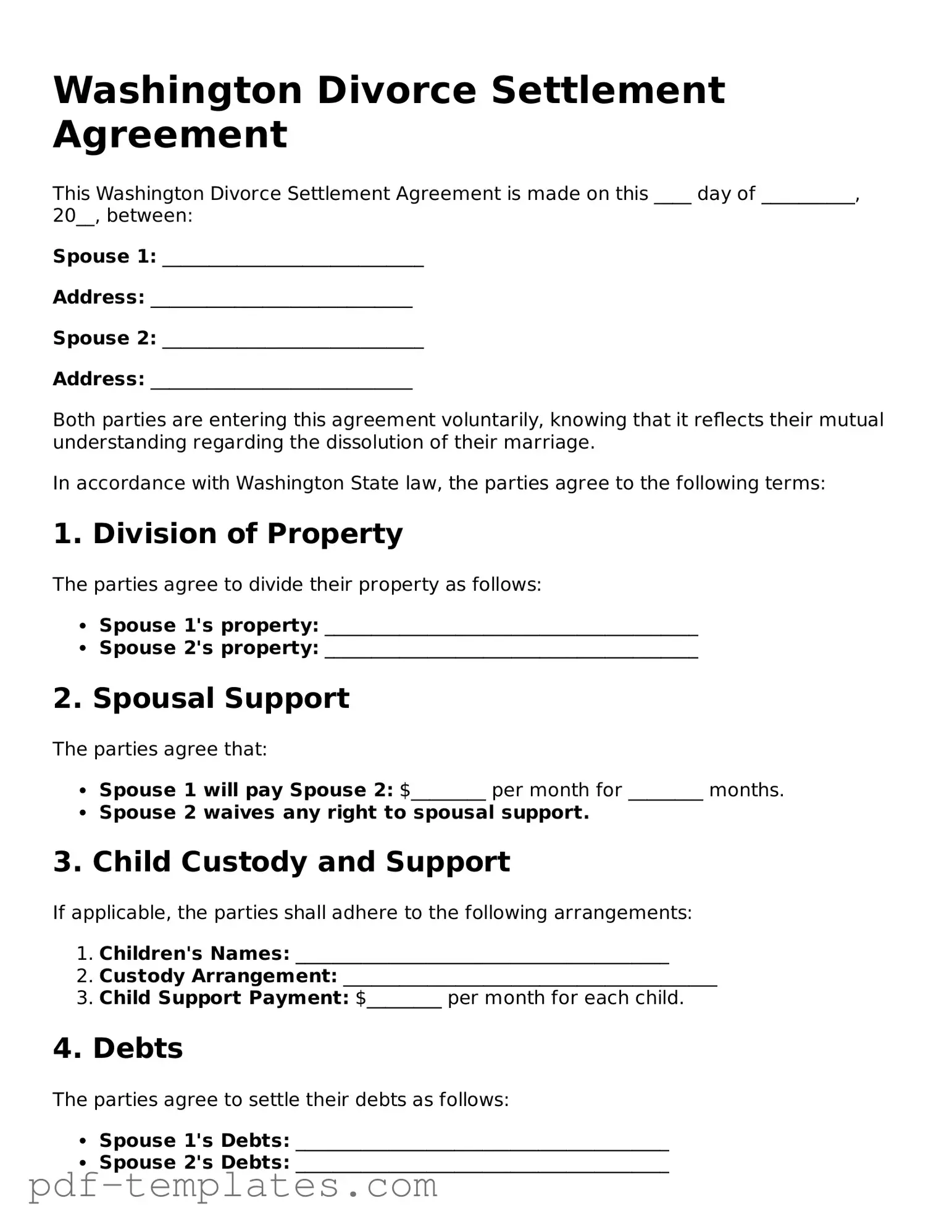The Washington Divorce Settlement Agreement form shares similarities with a Marital Settlement Agreement. Both documents serve to outline the terms of a divorce, detailing how assets, debts, and responsibilities will be divided between spouses. A Marital Settlement Agreement is often used in uncontested divorces, where both parties agree on the terms without the need for court intervention. This agreement helps to clarify the expectations of each party and can be submitted to the court for approval, ensuring that the divorce process is smoother and more organized.
Another document that resembles the Divorce Settlement Agreement is the Separation Agreement. This form is typically used when couples decide to live apart but are not yet ready to finalize a divorce. Like the Divorce Settlement Agreement, a Separation Agreement outlines the division of property, financial obligations, and child custody arrangements. It serves as a binding contract that can later be converted into a Divorce Settlement Agreement if the couple chooses to proceed with a divorce. This document allows couples to establish clear guidelines while they transition into separate lives.
For those looking to rent a property, completing a thorough Rental Application form is an essential step. This form not only aids landlords in evaluating potential tenants but also helps applicants present their credentials effectively, increasing their chances of securing the desired rental.
A Parenting Plan is also similar to the Divorce Settlement Agreement, particularly in cases involving children. This document specifically focuses on the custody and visitation arrangements for children after the divorce. While the Divorce Settlement Agreement covers broader financial and property issues, the Parenting Plan addresses the parenting responsibilities and rights of each parent. Both documents aim to ensure the well-being of the children and provide a structured approach to co-parenting, which is essential for maintaining stability in their lives.
Lastly, the Property Settlement Agreement is another document akin to the Divorce Settlement Agreement. This form is primarily concerned with the division of marital property and debts. While the Divorce Settlement Agreement encompasses a wider range of issues, including custody and support, the Property Settlement Agreement hones in on the financial aspects. It details how assets will be divided and what debts each party will be responsible for after the divorce. Both agreements are crucial in ensuring that the financial interests of both parties are protected during the divorce process.
